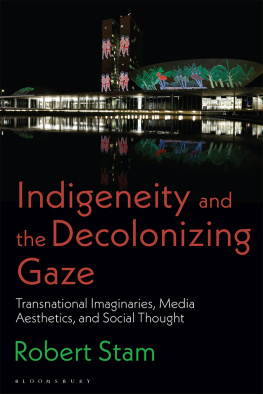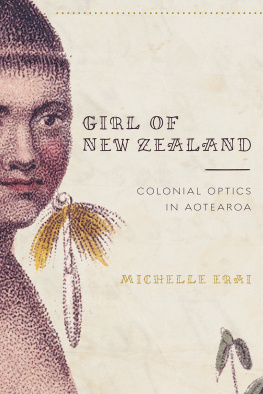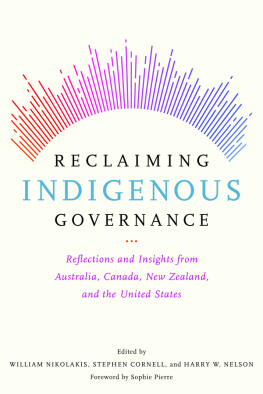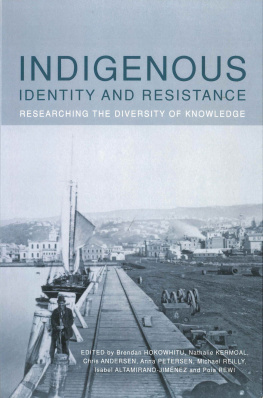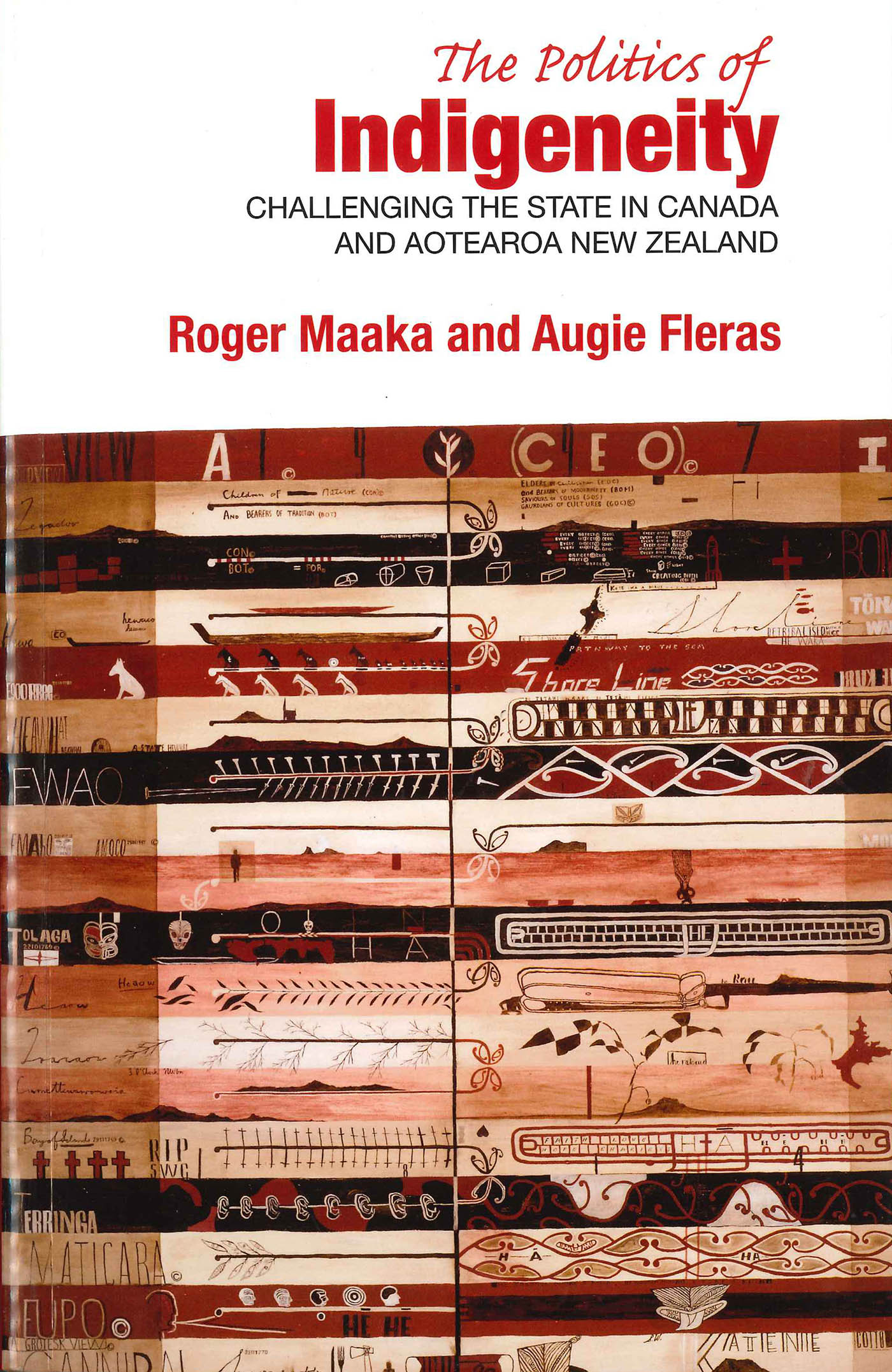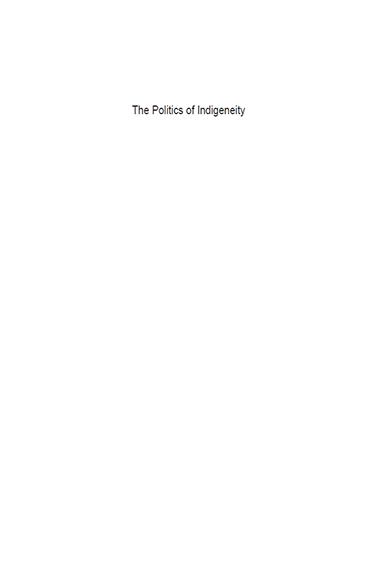Cover: Shane Cotton (b. 1964, New Zealand), Viewed, 1997.
182.8 cm x 167.8 cm, oil on canvas.
National Gallery of Victoria, Melbourne, Australia.
Preface: Unlocking the Silence
The world is in the midst of a profound transformation because of peoples politics. In the space of a generation, indigenous peoples have leapt from the margins of society to become key contestants in a rapidly evolving global order. An international movement of indigenous peoples has evolved because of shared experiences and common realities. It is based on claims to collective rights over self-determining autonomy that reject the conventional forms of Western society-building associated with multiculturalism, individual rights, and universal equality (Niezen, 2003). This international social movement is highly political in advancing the politics of self-determination, but also incorporates other dimensions such as the revitalisation of culture, an increased participation in, and yet rejection of, mainstream institutions, and strategic alliances with indigenous and non-indigenous groups (Smith, 1999).
Yet indigenous peoples remain the poorest of the poor, despite a higher profile and grudging state recognition. The machinery and goals of expansionist societies have combined in the name of progress to erode indigenous cultures and traditional lifestyles. Indigenous peoples have been displaced from their traditional lands by exploitative resource extraction, with a demoralising effect on physical, social, and mental health (Whall, 2003). Not surprisingly, the United Nations General Assembly declared 1993 the International Year for the Worlds Indigenous People, in hopes of pinpointing the paradoxes of their lived experiences (Tauli-Corpuz, 2001).
The theme of the International Year insisted on a new partnership between indigenous peoples and the international community of nation-states. Emphasis focused on applying human rights legislation to indigenous peoples, with the intention of improving their participation in the planning and implementation of life-affirming projects. The benefits from such exposure were widely touted: indigenous peoples would enjoy a unique opportunity to publicise their plight before the world community while, simultaneously, securing global co-operation for solving various political, economic, social, and cultural problems. The opportunity to speak and be heard was critical: as deftly put by Ingrid Washinawatok, Chair of the Non Government Committee on the UN International Decade of the Worlds Indigenous People, we must unlock the silence of our people. Unlock the silence and let us speak to the world (also Battiste, 2000).
The spirit of the Year segued into the Decade when the United Nations proclaimed 1995 to 2004 as the International Decade of World Indigenous People, with further promises to expand global awareness of the injustices that confront indigenous peoples. Attention was drawn to the challenge of empowering more than 350 million indigenous peoples across 5000 cultures in seventy countries (Thornberry, 2002). Both the Year and the Decade paid tribute to the burgeoning profile of the indigenous rights movement as a formidable force at national and international levels (D. Hodgson, 2002). More specifically, the goals for the Decade sought to strengthen international co-operation to solve the problems that confronted Indigenous people in areas such as human rights, the environment, development, education, and health (cited in Indian and Northern Affairs, Canada, 1998).
Of the objectives articulated by the Decade, four prevailed. First, to educate both indigenous and non-indigenous societies about the problems, concerns, and aspirations of indigenous peoples. Second, to advance indigenous peoples rights by protecting identity and culture without precluding full participation in society at large. Third, to promote the ratification of the UN draft declaration of indigenous peoples rights and its entrenchment at international and national levels. And fourth, to specify quantifiable outcomes for measuring progress between 1995 and 2004.
Has the Decade reaped any dividends? It may be too early to detect appreciable gains because of delays in implementing the programme. Nevertheless, there are unmistakable signs of progress in addressing the Decades objectives. Indigenous peoples across the world are increasingly organising around a commonality of concerns, needs, and ambitions. There is growing awareness that those values, knowledge, and priorities possessed by indigenous peoples may sustain an increasingly fragile planet (INAC, 1998). Central authorities have taken steps to:
(a) acknowledge indigenous peoples as distinct minorities;
(b) improve meaningful consultation in areas such as environment and human rights;
(c) accept the reality of indigenous cultural differences; and
(d) promote indigenous involvement in solving socio-economic problems.
The end result? A mutual recognition that neither the nation-state nor indigenous peoples can disconnect from one another in an interconnected world.
Tangible benefits are no less evident. Nearly eighty years after the Cayuga First Nations of North America first petitioned for membership in the League of Nations, indigenous peoples now possess a forum where they can actively engage with those who have historically (mis)shaped their destiny (Sanders, 1998; Veran, 2002). The creation of a Permanent Forum on Indigenous Issues was inspired by fears that indigenous peoples interests would be compromised without an independent vehicle to convey shared aspirations (Sallot, 2002). Admittedly, the inaugural meeting of the Permanent Forum in New York in May 2002 exposed numerous flaws in the Forums mandate and organisation, including gaps in funding, working definitions, a lack of international commitment, and a dearth of workable co-ordinates for defining indigenous peoples. But the long-term benefits of institutionalising indigenism are beyond dispute. Individual indigenous voices are small actors on the global political stage. But the combination of 350 million individuals will make the crescendo of voices difficult to silence or ignore (Veran, 2002). Put bluntly, the worlds governments will have no choice but to constructively engage with the realities of indigenous peoples, indigenous rights, and indigenous politics.
The rationale behind this book draws its inspiration from the spirit of the Decade. The end of the International Decade of World Indigenous Peoples provides an opportunity to reflect on the emergence, growth, achievements, impact, and challenges of the indigenous rights movement (D. Hodgson, 2002; Albrechtsen, 2004). This stocktake focuses on key questions, namely: Who are indigenous peoples? What do they want and why? How do they hope to achieve their goals? What kind of outcomes are anticipated? And how has the International Decade contributed toward the attainment of goals, claims, and aspirations? Conversely, what do governments expect of indigenous peoples? What are they willing to concede? Is it possible to account for the disparity between government commitments and indigenous peoples aspirations? Is the constitutional impasse bridgeable or doomed to perpetual gridlock? Is it possible to construct a new social contract that balances national interests with self-determining autonomy, without major constitutional change?



